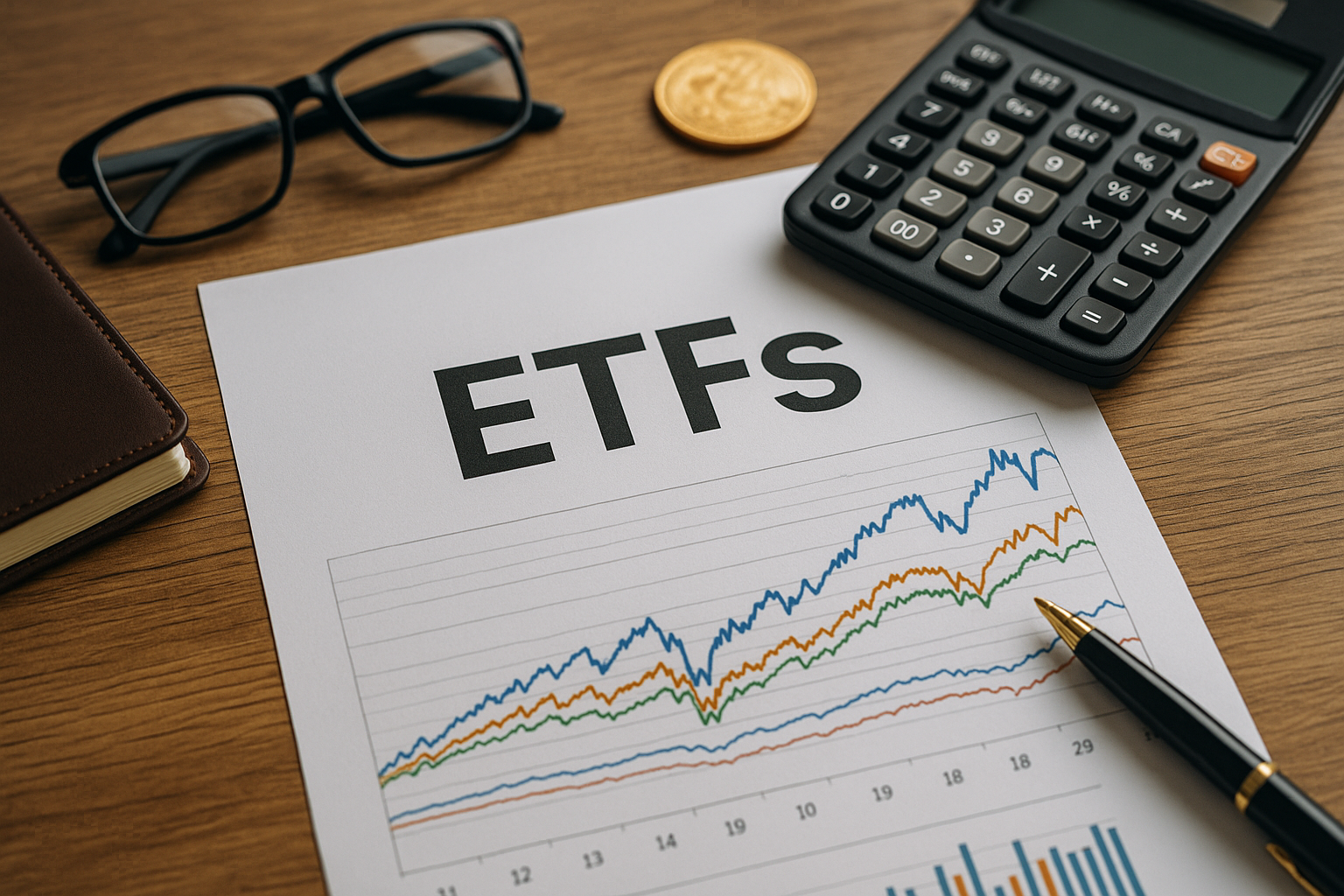In the world of investing, ETFs — or Exchange-Traded Funds — have become one of the most popular tools for both beginner and experienced investors. But what exactly are ETFs, how do they work, and why are they such a game changer for people who want to invest wisely and affordably?
This article explains everything you need to know about ETFs, in simple terms, and why they might be a smart addition to your portfolio.
What Is an ETF?
An ETF (Exchange-Traded Fund) is a type of investment fund that is traded on stock exchanges, much like individual stocks. But instead of investing in just one company, an ETF holds a collection of assets — such as stocks, bonds, or commodities — which makes it diversified by nature.
For example, a single ETF might contain shares from 500 different companies. When you buy one share of that ETF, you’re buying a small portion of all those companies at once.
How ETFs Work
Here’s a simple breakdown of how ETFs function:
- An Asset Manager (like Vanguard, iShares, or BlackRock) creates the ETF.
- This fund is made up of a basket of assets, often tracking an index like the S&P 500.
- The ETF is listed on a stock exchange, where anyone can buy or sell shares of the fund.
- Investors earn returns through:
- Dividends from the companies in the ETF (if any)
- Price appreciation (if the value of the ETF increases)
- The ETF’s price changes throughout the trading day, just like a stock.
ETFs vs. Mutual Funds
At first glance, ETFs and mutual funds might seem similar — both allow investors to pool their money and invest in a diversified portfolio. But there are key differences:
| Feature | ETFs | Mutual Funds |
|---|---|---|
| Trading | Traded like stocks during the day | Traded once per day after market close |
| Minimum investment | Often no minimum | Often requires minimum (e.g. $500–$3,000) |
| Fees | Typically lower | Often higher management fees |
| Tax efficiency | More tax efficient | Less tax efficient |
| Flexibility | High — can buy/sell anytime | Low — not real-time |
In short: ETFs offer more flexibility and lower costs, which is why they’re popular with modern investors.
Types of ETFs
There are several types of ETFs, each designed for different investment goals and strategies:
1. Stock ETFs
Track a specific group of stocks. Common examples include S&P 500 ETFs like SPY or VOO.
2. Bond ETFs
Include a mix of government and corporate bonds, great for conservative investors seeking stability and income.
3. Sector and Industry ETFs
Focus on specific sectors like technology, healthcare, or energy. Great for targeting high-growth industries.
4. International ETFs
Give exposure to markets outside your home country. Examples include emerging markets or developed countries.
5. Commodity ETFs
Invest in raw materials like gold, oil, or agriculture. These can be used for hedging or diversifying.
6. Thematic ETFs
Focus on investment “themes” like clean energy, AI, or space exploration. They’re trendy but can be riskier.
Why ETFs Are Ideal for Beginners
Here are a few reasons why ETFs are one of the best ways to get started in investing:
- Built-in diversification: You don’t need to buy multiple individual stocks.
- Low costs: Many ETFs have low expense ratios and zero commissions.
- Easy to buy and sell: You can trade them just like stocks using any online broker.
- Transparency: Most ETFs disclose their holdings daily.
- Automatic dividend reinvestment: Many brokers offer this for free.
How to Invest in ETFs
Getting started with ETFs is simple. Here’s how:
- Choose a brokerage account (Fidelity, Vanguard, Robinhood, etc.)
- Deposit funds into your account
- Search for ETFs that match your investment goals
- Review the ETF’s facts, such as:
- Expense ratio (aim for below 0.20%)
- Holdings (what assets are inside)
- Performance history
- Buy ETF shares just like buying a stock
You can even buy fractional shares, meaning you don’t need to spend hundreds of dollars at once.
Example: Investing in VOO
One of the most popular ETFs is VOO, which tracks the S&P 500 index. When you buy one share of VOO:
- You’re investing in 500 large U.S. companies like Apple, Google, Amazon, and Microsoft
- Your returns reflect the performance of the entire U.S. economy
- You get paid dividends, and the ETF’s value may increase over time
It’s a low-risk, high-value way to gain broad exposure.
Risks of ETFs
ETFs are generally safer than individual stocks, but they still come with some risks:
- Market risk: If the market drops, your ETF value will too.
- Sector risk: Specialized ETFs can be volatile.
- Tracking error: Some ETFs don’t perfectly match their index.
- Liquidity risk: Rare ETFs may be harder to buy or sell quickly.
Always read the ETF’s prospectus before investing.
ETF Investment Strategies
Depending on your goals, here are a few simple ETF strategies:
- Buy-and-hold: Pick a few broad-market ETFs and hold them long-term.
- Core-satellite: Use broad ETFs as the “core” and add specialty ETFs as the “satellite.”
- Dividend investing: Choose ETFs with strong dividend-paying stocks for regular income.
Final Thoughts: A Smart Tool for Modern Investors
ETFs have revolutionized the investment world. With low costs, built-in diversification, and ease of access, they’re perfect for beginners looking to build long-term wealth.
Whether you’re starting with $50 or $5,000, ETFs can be a smart foundation for a solid, simple, and successful investment portfolio.

